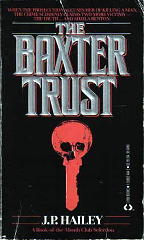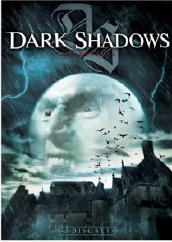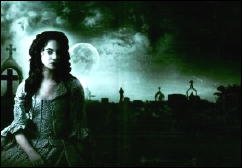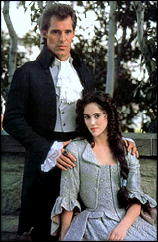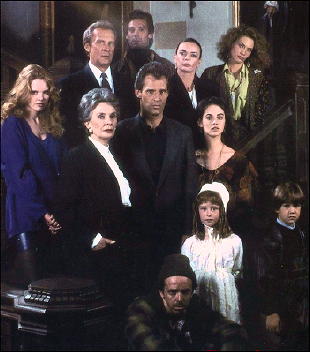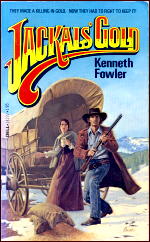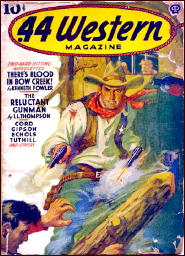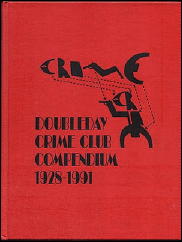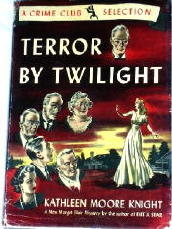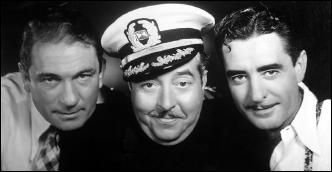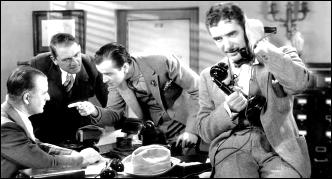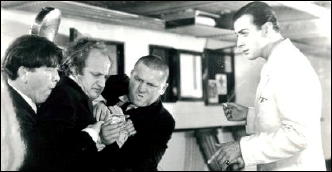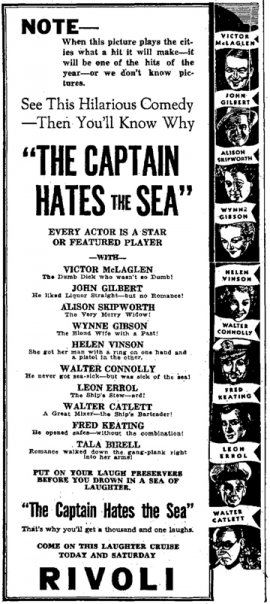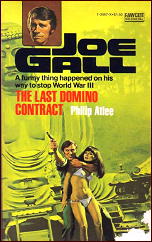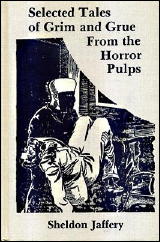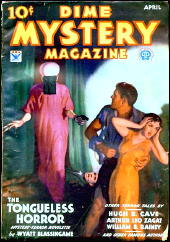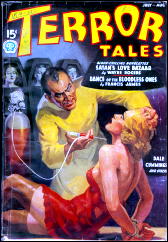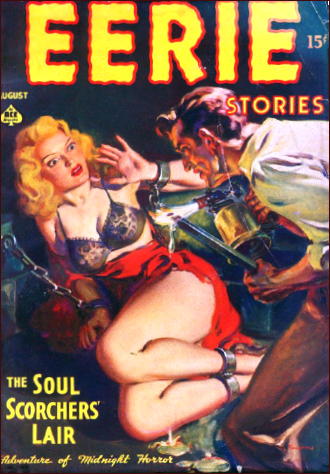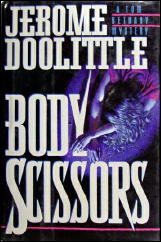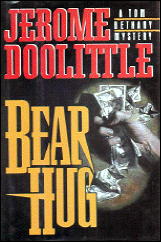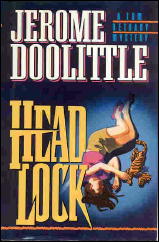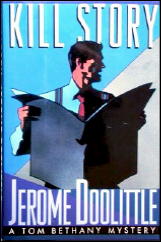STAR TREK FOR THE MYSTERY FAN
by Michael Shonk
STAR TREK. NBC / Paramount Studios, 1966-1969. Created by Gene Roddenberry. Cast: William Shatner as Captain James T. Kirk, Leonard Nimoy as Mr. Spock, and DeForrest Kelley as Dr. Leonard “Bones†McCoy
While Star Trek is TV’s most famous science fiction series, many of its episodes can be considered part of the mystery genre:
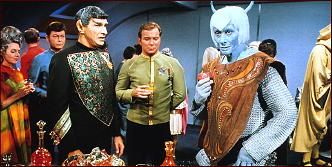
â— “Journey to Babel.” (11/17/67) Written by D.C. Fontana. Directed by Joseph Pevney. Guest Cast: Mark Lenard and Miss Jane Wyatt
While the episode focuses on the relationship between Spock and his parents, the story’s backdrop of political intrigue, spies, and murder will appeal to those seeking a good TV thriller. The Enterprise is escorting a group of diplomats on their way to an important conference when one of them is murdered and Spock’s Dad (Mark Lenard) is the chief suspect.
â— “Conscience of the King.” (12/8/66) Written by Barry Trivers. Directed by Gerd Oswald. Guest Cast: Arnold Moss, Barbara Anderson, and Bruce Hyde.
A friend tries to convince Kirk that an actor in a touring troupe of Shakespearean actors is the long sought after mass murderer, Kodos the Executioner. When the friend is murdered, Kirk investigates the troupe further. The acting and dialog are too much over the top for my taste, but the final confession scene is worthy of Perry Mason.
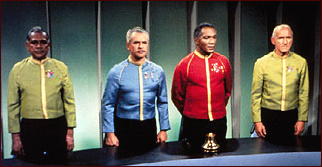
â— “Court Martial.” (2/2/67) Teleplay by Don M. Mankiewicz and Steven W. Carabatsos. Story by Don M. Mankiewicz. Directed by Marc Daniels. Guest Cast: Percy Rodriguez, Elisha Cook and Joan Marshall.
Speaking of lawyer Perry Mason, the courtroom was featured in more than one episode of the series. In this episode, Kirk is on trail for causing the death of a crew member. The lawyer (Elisha Cook) was right out of the Perry Mason’s school as he pulled one dramatic trick after another.
â— “The Menagerie, Part One.” (11/17/66) Written by Gene Roddenberry. Directed by Marc Daniels (*). “Part Two.” (11/24/66) Written by Gene Roddenberry. Directed by Robert Butler (*). Guest Cast: Malachi Throne and Sean Kenny; from the series pilot, “The Cage”: Jeffrey Hunter, Susan Oliver and M. Leigh Hudea.
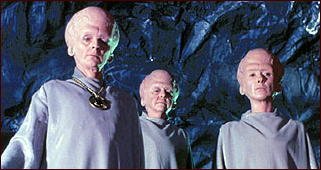
Spock kidnaps invalid Christopher Pike, his former Captain and forces the Enterprise to travel to the off limits planet Talos IV. During the trip Spock is put on trail for mutiny. The courtroom is used as a framing device so the series can save some production time and money and show the series original pilot, “The Cage.”. Spock’s motives and what happened on the original mission supply the mystery for this Hugo award winning two-part episode.
(*) Robert Butler directed the pilot “The Cage” but was not interested in returning. Marc Daniels directed the new footage and the two split the credit with Daniels getting screen credit for Part One and Butler getting screen credit for Part Two.
â— “Wolf in the Fold.” (12/22/67) Written by Robert Bloch. Directed by Joseph Pevney. Guest Cast: John Fiedler, Charles Macauley and Pilar Seurat.
This is the series’ attempt at a police procedural. During a visit to a planet, Chief Engineer Scott (James Doohan) is accused of being a serial killer. The chief investigator uses the typical procedural methods of fingerprints (Scotty’s fingerprints were on the murder weapon), and questioning witnesses and other suspects, but the story does take a supernatural turn or two CSI might not have taken.
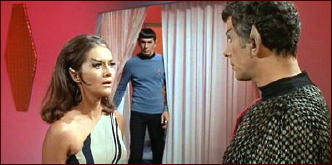
â— “The Enterprise Incident.” (9/27/68) Written by D.C. Fontana. Directed by John Meredyth Lucas. Guest Cast: Joanne Linville, Jack Donner and Richard Compton.
Inspired by the real spy drama of the Pueblo incident. Kirk takes the Enterprise into Romulan (the series other bad guys) Neutral Zone where the ship and crew are captured. Fans of Spock like this one as the female Romulan Captain seduces our hero of logic. The spy thriller plot of obtaining military secrets from the enemy is a strong one.
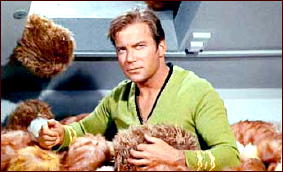
â— “The Trouble with Tribbles.” (12/29/67) Written by David Gerrold. Directed by Joseph Pevney. Guest Cast: William Schallert, Stanley Adams, and William Campbell.
Perhaps the series’ most beloved episode was also the cutest TV episode ever to be about a terrorist plot to kill millions. Who can forget those non-stop reproducing adorable balls of fur called Tribbles? Love by all, well almost all. And that was the key to foiling the evil scheme and uncovering the villain responsible.
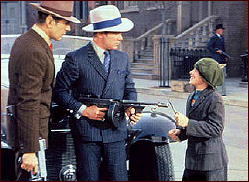
â— “A Piece of the Action.” (1/12/68) Teleplay by David P. Harmon and Gene L. Coon. Story by David P. Harmon. Guest Cast: Anthony Caruso, Vic Tayback and Lee Delano.
The Enterprise’s visit to a planet “contaminated†a century earlier by visiting explorers from Earth leads to a fun comic caper. The planet had adopted an Earth history book on 1920’s Chicago mobs as the basis of their civilization. Someone took a Tommy gun and shot the story full of plot holes, so try not to think too hard and just enjoy this humorous nod to great gangsters movies (there is a scene that mimics Mervyn LeRoy’s Little Caesar).
Sadly, Gene Roddenberry’s original Star Trek world was too perfect for any true noir unless you wore a red uniform or was a beautiful woman one of the guys fell in love with, then you were as doomed as any noir character.
NOTE: For more information and endless spoilers I recommend a visit to Memory Alpha at http://en.memory-alpha.org/wiki/Star_Trek:_The_Original_Series.
